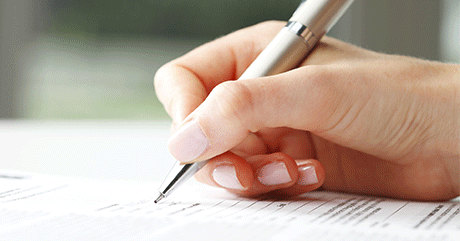Properly Executing the Medicare ABN-Part II
Just about one year ago, we used this blog space to publish a two-part series on how to properly execute the Medicare ABN. With the release of this new form, we think it is important to loop back and re-post the series once again this year since there will be renewed interest in reviewing the subtle changes that have been made to the form. Following last week’s post, we present the conclusion to this series.…
Last Week
Thanks for returning to read out two-part series, Properly Executing the Medicare ABN.
Last week we introduced the Advance Beneficiary Notice of Noncoverage (ABN) to you and explained the theory behind the use of this government- issued form.
 You’ll recall that we explained that the ABN is never used in a 9-1-1/emergency setting and described how the actual mandatory use of the form is limited to those incidents when the patient could receive services at the sending facility but is being transported to a second facility anyway.
You’ll recall that we explained that the ABN is never used in a 9-1-1/emergency setting and described how the actual mandatory use of the form is limited to those incidents when the patient could receive services at the sending facility but is being transported to a second facility anyway.
Plus we outlined the optional uses for the form.
What you can do…
This week we’ll describe the proper execution of the form in the field.
First let’s tackle what you, as a representative of your EMS agency, can do.
The form can be modified to include your EMS agency’s Legal Business Name, Address and your phone and fax numbers.
You may have the form pre-printed professionally, or simply make advance copies. Many EMS agencies have the form printed in a format that allows a copy to be presented to the patient, while keeping the original with signature following the transport, such as an NCR form.
You may add the patient’s name and his/her Medicare beneficiary number prior to presenting the form.
The middle section, the text box that lists the Services to be provided, the reasons why Medicare may not pay and the Estimate Cost can be modified to fit your particular anticipated needs for use in informing the patient of his/her options.
Prior to presentation, at least one service option should be checked off and chosen for notification to the patient and an estimated cost must be added to the form in the appropriate blank corresponding to the service to be provided that is deemed to be uncovered by Medicare.
What you cannot do…
First, you cannot alter the basic layout or the font size of the form. Because this form is published by the Federal Government and approved by the Office of Management and Budget (OMB) and the Centers for Medicare and Medicaid Services (CMS), it cannot be majorly altered in any way.
The presentation and execution of the form should not be made in the ambulance. Once the patient is loaded into the ambulance vehicle, most patients would feel obligated to sign and continue with the transport. You must present the ABN prior to patient loading which affords the patient the ability to refuse the transport or seek another EMS agency to move the patient, based primarily on the estimated out-of-pocket cost the patient will incur.
You and your EMS agency’s providers are not permitted to fill any information out below the notification text box. The patient must independently choose one of the three options they have for billing and/or presentation to the Medicare payer without your assistance.
Finally, neither you nor anyone else associated with your EMS agency is permitted to sign the form. Only the patient or a patient representative can sign and once signed the signature, if not legible, should have a printed name below or near the signature and the signature must be dated (specifically dated next to the actual signature.)
If a representative signs the ABN, then be sure to print the word “representative” next to that person’s signature.
Estimate Cost- Good Faith Effort
When providing the mandatory estimated cost on the form, the rules state that you must provide an estimated cost that should be within $100 or 25% of the actual cost of the transport- whichever is greater.
You may provide an estimate that exceeds the actual cost in which case the beneficiary would not be wrongly misled and impacted financially as opposed to when the estimated cost of the transport is represented to be substantially lower than the eventual billed-to-patient amount.
Person signing must be responsible party…
Unlike the signature authorization forms, not just anyone can sign the ABN.
Because this form is ultimately a financial decision form, it is extremely important that the patient or a legally/financially responsible person sign the form. Signing the form represents that the patient or appropriate patient representative signer (such as a spouse, Power of Attorney, guardian, etc.) is legally authorized to accept ultimate financial responsibility for the billed costs of the transport.
Once signed, it is recommended that you retain the ABN with the original signature on behalf of your EMS agency, while the patient should be presented with a copy for his/her records. Once fully executed, no changes or alterations should be made to the ABN by anyone in your EMS agency.